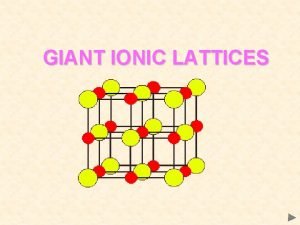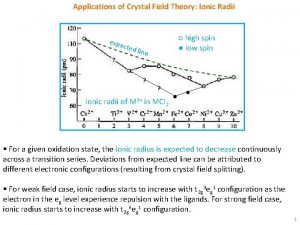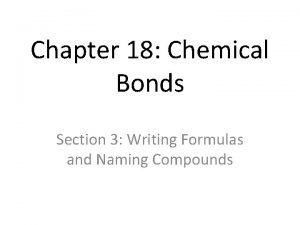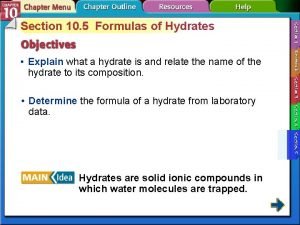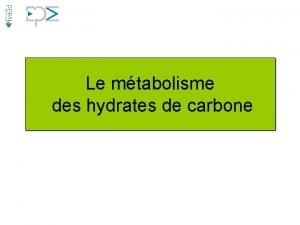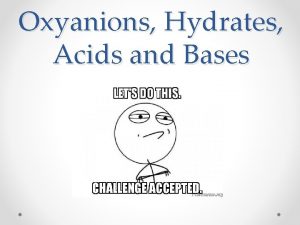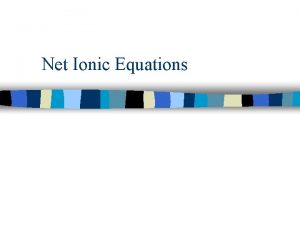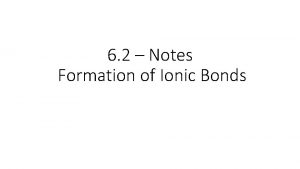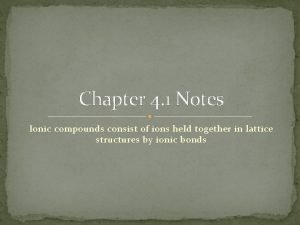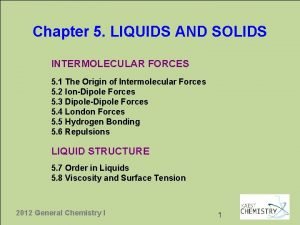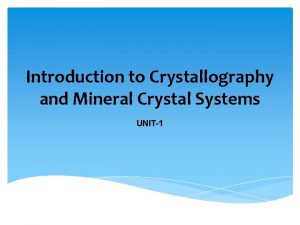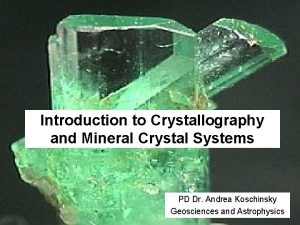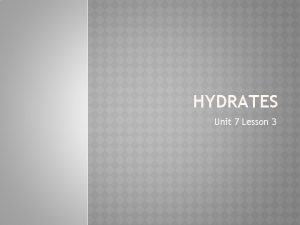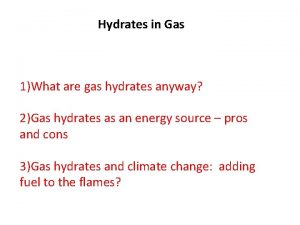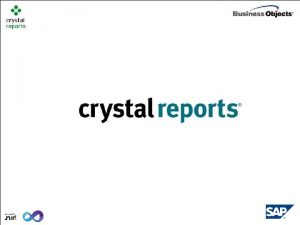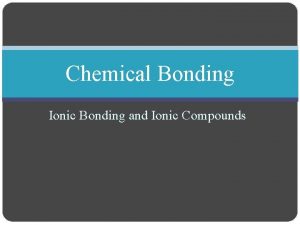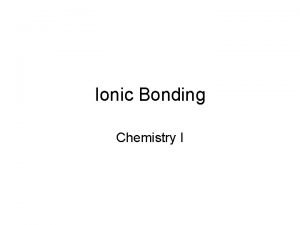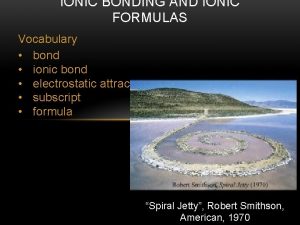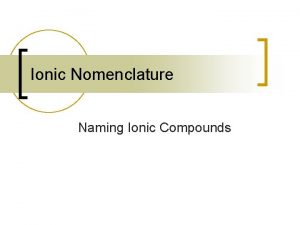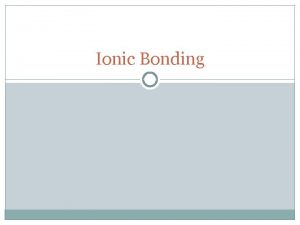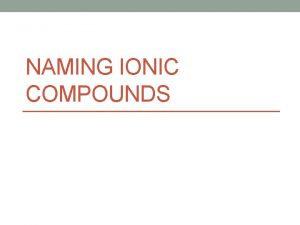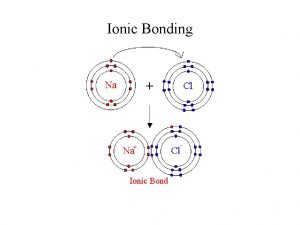6 8 NOTES Hydrates Hydrates An Ionic Crystal


















- Slides: 18

6. 8 – NOTES Hydrates

• Hydrates • An Ionic Crystal with water trapped within the crystal structure. • If water is removed it is called an anhydrous salt. • Cu. SO 4 5 H 2 O + heat Cu. SO 4 + 5 H 2 O

Cu. SO 4 + 5 H 2 O

• Naming Hydrates • Name the ionic compound portion as normal. • Add the word “hydrate” with a prefix indicating the number of water molecules in the formula: • Prefixes: • • 1 = mono • 6 = hexa • 2 = di 7 = hepta 3 = tri 8 = octa 4 = tetra 9 = nona 5 = penta 10 = deca

• Examples: • Cu. SO 4 5 H 2 O • Na 2 CO 3 • 10 H 2 O • Ni. Cl 2 • 7 H 2 O

• Percentage composition of compounds (review of Unit 2) and percentage composition of hydrates. Similar to finding % composition; when adding up the elements add up water as H 2 O; • Example: • Determine the percentage composition of sodium oxide. • Na 2 O • Na = 2 x 23. 0 = 46. 0 % Na = 46. 0 / 62. 0 x 100 = 74. 2% • O = 1 x 16. 0 = 16. 0 % O = 16. 0 / 62. 0 x 100 = 25. 8% • 62. 0 g/ mol

• Determine the percentage of water in Na 2 CO 3 • 10 H 2 O. • Na = 2 x 23. 0 = 46. 0 % H 2 O = 180. / 286 x 100 = 62. 9% • C = 1 x 12. 0 = 12. 0 • O = 3 x 16. 0 = 48. 0 • 106. 0 • H 2 O = 10 x 18. 0 = 180. • 286 •

• Example: Cu. SO 4 • 5 H 2 O • Name the compound, then write the equation for the heating of this compound. • Cu. SO 4 • 5 H 2 O = copper (II) sulfate (or cupric sulfate) pentahydrate • • Cu. SO 4 • 5 H 2 O Cu. SO 4 + 5 H 2 O (anhydrous + water) water driven off as vapor

• B. Determine the % of water in this compound. • Cu = 63. 6 90. 0 x 100 = 36. 0% • S = 32. 1 249. 7 • O = 64. 0 (= 4 x 16. 0) • H 2 O = 90. 0 (= 5 x 18. 0) • 249. 7

• IV. Metallic Bonds and Properties of Metals • Metallic bonds • Metallic Bonds occur between metals and metals • Force of attraction exists between metal cations and delocalized sea of electrons • Delocalized: not belonging to any particular atom • The delocalized electrons form the “Electron Sea” which is mobile and flexible • Metal Cation Lattice is postive and Electron Sea is negative, so a bond is created • ;


• Metallic Bond Strength is dependent upon: • Size of Metal Cations • Stronger when smaller • Number of Delocalized Electrons • As the number of valence electrons increases, strength increases

• Alloys: Metallic Bonds created between two or more different metals • Brass = Copper and Zinc • Bronze = Copper and Tin • Steel = Iron, Carbon, Chromium/Manganese) • <24 K Gold • amalgams – Hg based alloys; used to be found in dental work

2. Properties of metals • Malleable and Ductile • Conductive • Lustrous • High MP • Very High BP • Hardness - increases with stronger bonding




 Giant ionic lattice examples
Giant ionic lattice examples Applications of crystal field theory
Applications of crystal field theory Prefixes for hydrates
Prefixes for hydrates Name the compound al2br3
Name the compound al2br3 Hydrates de carbone
Hydrates de carbone Naming hydrates
Naming hydrates When to use prefixes for naming compounds
When to use prefixes for naming compounds How to find net ionic equation
How to find net ionic equation Ionic bonds notes
Ionic bonds notes Ions and ionic bonding cornell doodle notes
Ions and ionic bonding cornell doodle notes Concept 2 notes naming ionic compounds
Concept 2 notes naming ionic compounds Facteur g
Facteur g Unsent message loany
Unsent message loany Crystal ball crack
Crystal ball crack Single crystal diffractometer
Single crystal diffractometer Ideal crystals have
Ideal crystals have Liquid crystal.h
Liquid crystal.h Dome crystal form
Dome crystal form Mineral crystal systems
Mineral crystal systems
